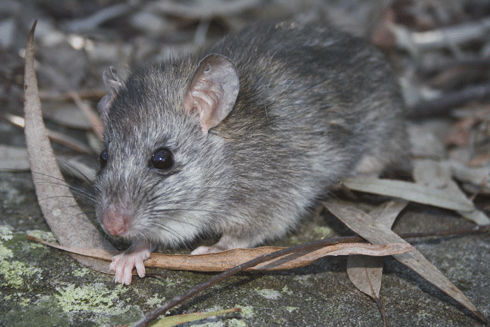
|
Published: 22 October 2012
Olfactory trick keeps rats away from native birds
Rats' keen sense of smell can be exploited to dramatically reduce the frequency of attacks on native birds, providing a possible technique to protect vulnerable species, a new study suggests.

|
|
When black rats tracked the smell of potential prey species and found no live prey, they effectively lost interest in the bird odour after around three days. Credit:
UNSW
|
By exposing black rats (Rattus rattus) to a birds’ scent – through faeces and feathers – before introducing eggs, researchers observed that the rats were less inclined to pursue the smell once eggs were present.
‘Introduced black rats are a major threat to the conservation of many bird species worldwide so a new method for reducing their impact is good news for conservation,’ said Dr Catherine Price, who led the study while completing her PhD at UNSW.
Price, now a research associate at the University of Sydney, published the results of the study in the journal Proceedings of the National Academy of Sciences.
‘Working with wild populations of black rats in the bushland of Sydney Harbour and Lane Cove National Parks in NSW we discovered that we could increase the survival of birds’ eggs without removing a single rat,’ said Price.
‘An added advantage of this method is that it is not lethal to the predator. That means it is especially suited to protecting a vulnerable prey species when the predator is also endangered or under threat.’
Mammal predators live in a richly layered world of smells and have to learn to detect and recognise immense numbers of odours and distinguish minute differences between those that lead to food resources, and others that don’t.
‘We exploited this ability in rats by exposing them to the smell of quail faeces and feathers. In this case domestic quail were used as a stand-in for any new species of native bird because their smell would be unfamiliar to the rats,’ said Price.
‘When the rats investigated the smell they found no live prey so their interest went unrewarded and after about three days they effectively lost interest in the bird odour.’
The researchers then placed real quail eggs in artificial nests throughout the rats’ habitat. They found they had a 62 per cent greater survival rate than eggs that were introduced without first exposing the rats to the unrewarded quail smell.’
By pre-exposing the rats to the smell they learnt to ignore a cue that did not bring any reward. This allowed the introduction of prey to occur without attracting the rats’ attention and reigniting their interest.
‘This technique of smell pre-exposure could be widely used in conservation. It has the potential to benefit many species currently threatened by rats, such as the North Island robin and red-crowned parakeet in New Zealand. We hope it can also be used to help protect endangered Australian species, such as greater stick-nest rats, burrowing bettongs and even loggerhead turtles against a range of introduced mammal predators.
‘Our research introduces a different approach to pest management which manipulates normal predator behaviour. We hope it encourages others to think outside the square to tackle conservation problems.’
Source: UNSW



